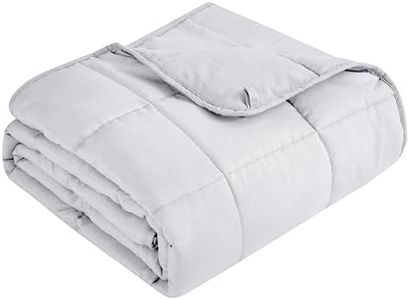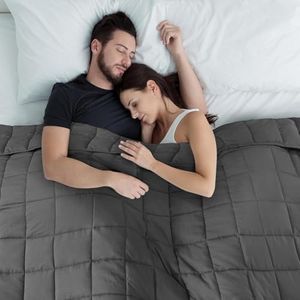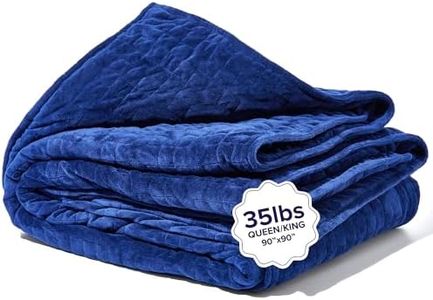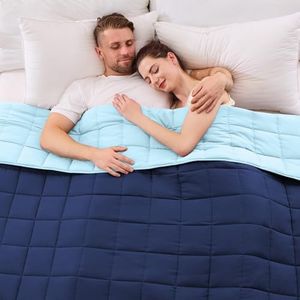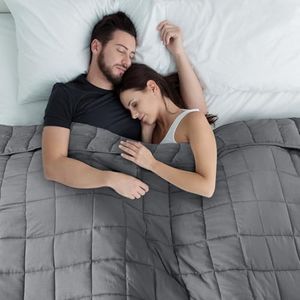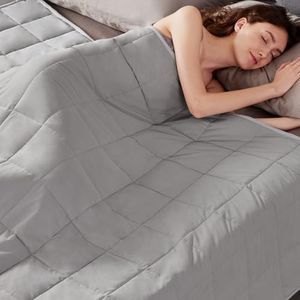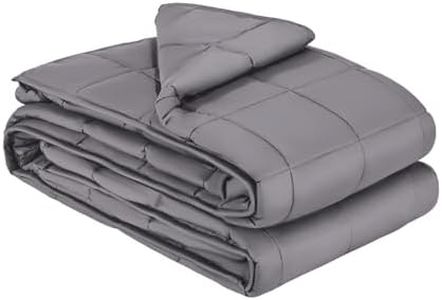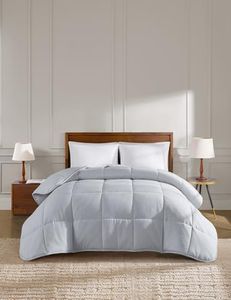We Use CookiesWe use cookies to enhance the security, performance,
functionality and for analytical and promotional activities. By continuing to browse this site you
are agreeing to our privacy policy
10 Best King Size Weighted Blanket
From leading brands and best sellers available on the web.Buying Guide for the Best King Size Weighted Blanket
When choosing a king-size weighted blanket, you want comfort, calming pressure, and a fit that's both beneficial and manageable on a large bed. The best way to approach this is by understanding how weight, size, fabric, filling, and maintenance match your personal sleep habits and needs. Remember, the ideal blanket will feel like a gentle hug, not an overwhelming presence, and should suit your sleeping preferences, sensitivity, and how you use your bed.WeightThe weight of a weighted blanket refers to how heavy the blanket feels when draped over your body. This is crucial because the right weight provides the calming benefits of gentle pressure (called Deep Touch Pressure), which can help with relaxation and sleep. Weighted blankets typically range from about 12 to 30 pounds for a king size, but not everyone needs the heaviest option. The general recommendation is to pick one that's around 8-12% of your body weight, but for king-size blankets that cover two people, you may need to compromise between the weights ideal for each person. Lighter blankets (around 15-18 pounds) are easier to handle and best for those new to weighted blankets or sensitive to pressure. Medium weights (18-22 pounds) suit average preferences. Heavier ones (22 pounds and up) are for those who really love the grounded feeling. Choose based on how much pressure feels comfortable for you and your partner.
Filling MaterialWeighted blankets get their heft from filling materials, which are most often glass beads or plastic pellets, sometimes with added cotton fibers for softness. The type of filling affects the feel, how evenly the weight is distributed, and sometimes noise. Glass beads are quieter, denser, and provide smooth, consistent pressure—great for a soothing, almost invisible feel. Plastic pellets tend to be a bit bulkier and can feel bumpier or make a slight noise when moved. If you're a light sleeper or want your blanket to feel as close to a normal comforter as possible, look for glass bead fillings. If you don't mind a bit of texture or noise, plastic is fine. Your ideal choice depends on your sensitivity to texture, sound, and how 'invisible' you want the weight to feel.
Outer FabricThe outer fabric of the weighted blanket touches your skin, so it's important for overall comfort and temperature regulation. Common materials include cotton, microfiber, bamboo, or minky fleece. Cotton and bamboo are breathable and cooler—a better choice if you sleep hot or use the blanket year-round. Microfiber and minky fleece are super soft and cozy, trapping more heat—ideal if you like extra warmth. Think about your usual bedding: do you like crisp, cool sheets, or snuggly warmth? Choose a fabric that matches your desired sleep temperature and texture preference.
SizeWhile you're already looking for a king-size weighted blanket, it's worth noting that actual blanket dimensions can vary, often running a bit smaller than a standard king-size comforter to avoid dragging on the floor. Make sure the blanket will adequately cover your bed and both sleepers, but won’t be oversized, as that spreads the weight too thin or makes the blanket hard to move. For couples, a blanket that covers both partners comfortably is ideal, but if one person moves a lot or you have different needs, you might consider separate blankets.
Care and MaintenanceMaintenance matters because weighted blankets are heavy and not always easy to wash. Some have removable, washable covers, while others can be put in the washing machine as a whole (though this isn’t always practical once you get to a king size). Check the care instructions: blankets with zip-off covers are simplest for regular cleaning, especially for allergy sufferers or if you have pets or kids. Choose based on how often you want to wash your blanket and whether you have easy access to a high-capacity washing machine.
